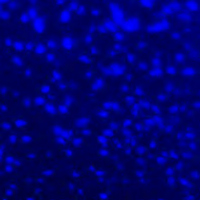Novel understanding on genetic mechanisms of enteric neuropathies leading to severe gut dysmotility

Submitted: 14 June 2021
Accepted: 3 November 2021
Published: 25 November 2021
Accepted: 3 November 2021
Abstract Views: 1561
PDF: 959
HTML: 42
HTML: 42
Publisher's note
All claims expressed in this article are solely those of the authors and do not necessarily represent those of their affiliated organizations, or those of the publisher, the editors and the reviewers. Any product that may be evaluated in this article or claim that may be made by its manufacturer is not guaranteed or endorsed by the publisher.
All claims expressed in this article are solely those of the authors and do not necessarily represent those of their affiliated organizations, or those of the publisher, the editors and the reviewers. Any product that may be evaluated in this article or claim that may be made by its manufacturer is not guaranteed or endorsed by the publisher.
Similar Articles
- Eetmad A. Arafat, Eman M.I. Youssef, Hanaa A. Khalaf, The possible alleviating effect of garlic supplement on the neural retina in a rat model of hypercholesterolemia: a histological and immunohistochemical study , European Journal of Histochemistry: Vol. 65 No. 4 (2021)
- Shiyuan Chen, Longfei Zhang, Benchi Feng, Wei Wang, Delang Liu, Xinyu Zhao, Chaowen Yu, Xiaogao Wang, Yong Gao, MiR-550a-3p restores damaged vascular smooth muscle cells by inhibiting thrombomodulin in an in vitro atherosclerosis model , European Journal of Histochemistry: Vol. 66 No. 3 (2022)
- Yangying Peng, Shaojie Ding, Ping Xu, Xueyan Zhang, Jianzhang Wang, Tiantian Li, Liyun Liao, Xinmei Zhang, CCL18 promotes endometriosis by increasing endometrial cell migration and neuroangiogenesis , European Journal of Histochemistry: Vol. 68 No. 3 (2024)
- E. Akat, H. Arıkan, B. Göçmen, Histochemical and biometric study of the gastrointestinal system of Hyla orientalis (Bedriaga, 1890) (Anura, Hylidae) , European Journal of Histochemistry: Vol. 58 No. 4 (2014)
- E. Guerriero, F. Capone, M. Accardo, A. Sorice, M. Costantini, G. Colonna, G. Castello, S. Costantini, GPX4 and GPX7 over-expression in human hepatocellular carcinoma tissues , European Journal of Histochemistry: Vol. 59 No. 4 (2015)
- Elva I. Cortés Gutiérrez, Catalina García-Vielma, Adriana Aguilar-Lemarroy, Veronica Vallejo-Ruíz, Patricia Piña-Sánchez, Pablo Zapata-Benavides, Jaime Gosalvez, Expression of the HPV18/E6 oncoprotein induces DNA damage , European Journal of Histochemistry: Vol. 61 No. 2 (2017)
- G. Radaelli, C. Poltronieri, C. Simontacchi, E. Negrato, F. Pascoli, A. Libertini, D. Bertotto, Immunohistochemical localization of IGF-I, IGF-II and MSTN proteins during development of triploid sea bass (Dicentrarchus labrax) , European Journal of Histochemistry: Vol. 54 No. 2 (2010)
- G. Musumeci, P. Castrogiovanni, V. Mazzone, M.A. Szychlinska, S. Castorina, C. Loreto, Histochemistry as a unique approach for investigating normal and osteoarthritic cartilage , European Journal of Histochemistry: Vol. 58 No. 2 (2014)
- W.J. Liu, J. Yang, Developmental expression of inositol 1, 4, 5-trisphosphate receptor in the post-natal rat cochlea , European Journal of Histochemistry: Vol. 59 No. 2 (2015)
- M. Malatesta, M. Giagnacovo, M. Costanzo, B. Cisterna, R. Cardani, G. Meola, Muscleblind-like1 undergoes ectopic relocation in the nuclei of skeletal muscles in myotonic dystrophy and sarcopenia , European Journal of Histochemistry: Vol. 57 No. 2 (2013)
<< < 11 12 13 14 15 16 17 18 19 20 > >>
You may also start an advanced similarity search for this article.

 https://doi.org/10.4081/ejh.2021.3289
https://doi.org/10.4081/ejh.2021.3289











